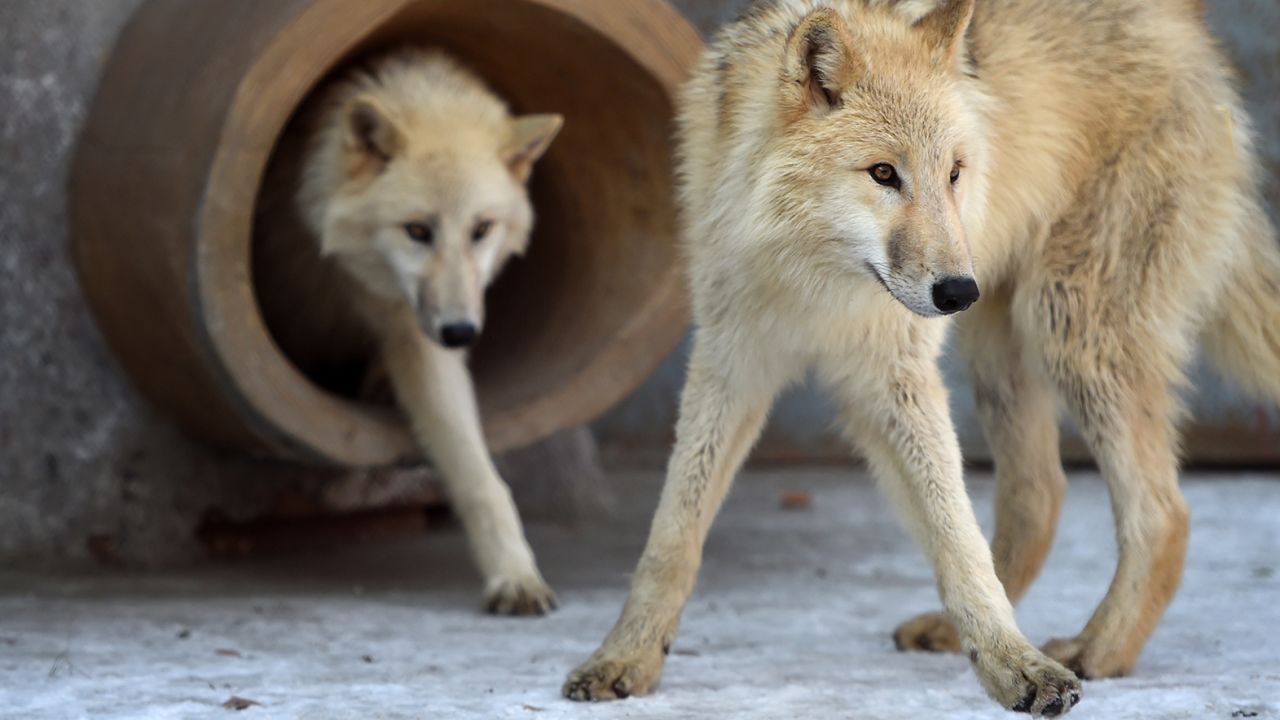Endangered ferret successfully cloned 0:42
Hong Kong (CNN) --
Researchers in China have succeeded in cloning a wild Arctic wolf, and they hope the controversial gene technology can now be used to help save other threatened species as the world approaches an extinction crisis.
On Monday, Beijing-based Sinogene Biotechnology unveiled the female wolf clone -- named Maya by scientists -- 100 days after her birth on June 10.
Maya, a greyish-brown puppy with a bushy tail, is in good health, the company said.
During a press conference, he showed videos of Maya playing and resting.
"After two years of painstaking efforts, the arctic wolf was successfully cloned. It is the first such case in the world," Mi Jidong, the company's general manager, said at the press conference, according to Chinese state media.
The arctic wolf, also known as the white wolf or polar wolf, is a subspecies of gray wolf native to the tundra of the High Arctic, in the arctic archipelago of northern Canada.
According to the World Wide Fund for Nature (WWF), its conservation status, the metric used to determine how close a species is to extinction, is considered low risk, as its arctic habitat is large enough remote enough to elude hunters.
But climate change increasingly threatens their food supply, and human development, like roads and pipelines, is encroaching on their territory.
Arctic wolves at Harbin Polarland in Harbin, China, on Nov. 22, 2017. Credit: Wang Jianwei/Xinhua/Getty Images
Sinogene launched its arctic wolf cloning project in 2020, in collaboration with the Harbin Polarland polar theme park, according to a statement posted on the Twitter-like Weibo platform.
advertising
To create Maya, the company used a process called somatic cell nuclear transfer, the same technique that was used to create the first mammalian clone in history, Dolly the sheep, in 1996.
First, they used a skin sample from the original arctic wolf, also called Maya, introduced from Canada to Harbin Polarland, to obtain "donor cells," which are then injected into a female dog's egg and carried to term by a womb. for rent.
Scientists managed to create 85 such embryos, which were transferred into the wombs of seven
beagles
, leading to the birth of a healthy arctic she-wolf, the newly cloned Maya, according to state media.
The company said in its Weibo post that a second cloned arctic wolf is expected to be born soon.
"The cloning technology provides a good entry point for the protection of endangered wild animals, which is a great contribution to the protection of biodiversity," said He Zhenming, director of the Institute of Laboratory Animal Resources. of the National Institute of Food and Drug Control of China, in the Weibo post.
He Zhenming added that the successful cloning of Maya was a "historical event, of great significance for the protection of the world's wildlife and the restoration of endangered species," according to the publication.
Sinogene said it will also start working with the Beijing Wildlife Park to research more cloning technology and applications, as well as carry out research on the conservation and breeding of rare and endangered animals in China.
The original Mayan wolf died of old age in 2021, according to the Global Times.
The cloned wolf now lives with her
beagle
surrogate mother , and will later be housed in Harbin Polarland, open to the public.
Pet cloning;
a curious service in China 1:06
extinction crisis
This is not the first time that conservation scientists have used cloning technology.
In Malaysia, where all Sumatran rhinos have died, scientists hope to use frozen tissue and cells to give birth to new rhinos using surrogate mothers.
And in late 2020, US scientists successfully cloned an endangered wild black-footed ferret, thought to be extinct around the world.
Back from the abyss: how 'frozen zoos' could save endangered species
Other scientists are betting on gene-editing technology, and a team in Australia is trying to edit cells from a marsupial to recreate its close relative, the extinct Tasmanian tiger.
These efforts are growing as scientists around the world scramble to save endangered species, as Earth approaches what is considered its sixth mass extinction.
There have been five mass extinction events in history, each eliminating between 70% and 95% of plant, animal, and microorganism species.
In the most recent, 66 million years ago, the dinosaurs disappeared.
This sixth mass extinction would be unique in that it is driven by humans, who have already wiped out hundreds of species through the wildlife trade, pollution, habitat loss and use of toxic substances.
According to a 2020 study, around a third of all plants and animals could be in danger of extinction by 2070, and things could get even worse if greenhouse gas emissions continue to rise rapidly.
But many of these new conservation efforts have also sparked controversy, with questions about the ethical and health implications of cloning and gene editing.
In Maya's case, a scientist told the Global Times that more research is needed into whether cloning causes potential health risks.
More rules also need to be established to determine the appropriate use of the technology, he added, such as cloning only extinct or endangered species.
chinacloning

